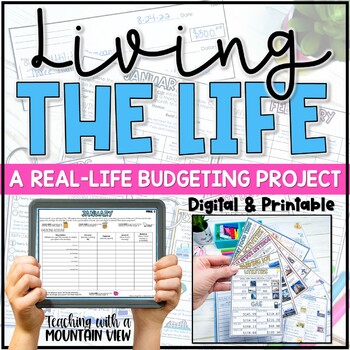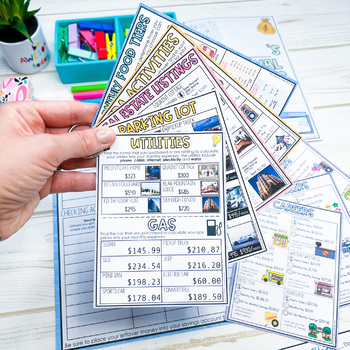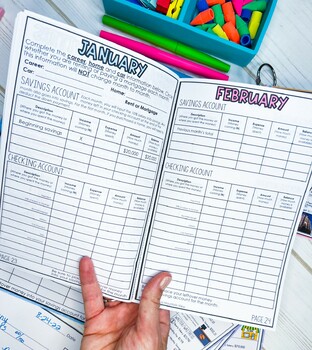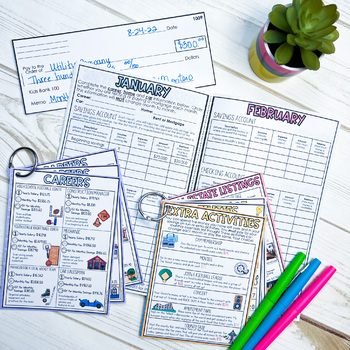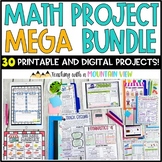Personal Budget Math Project and Financial Literacy Real World Math
- Zip
- Google Apps™

What educators are saying
Also included in
- Take engagement and rigor to the next level with these high-interest math projects for upper elementary. I have designed my math projects to be highly engaging, student-driven, real-world, and enriching. You’ll have a project for every occasion all year long! This bundle of THIRTY digital and printaPrice $89.99Original Price $126.20Save $36.21
Description
Whether you’re looking to teach financial literacy standards or engage your students in a high-interest addition and subtraction math project, this personal budget math project is sure to be a hit with your students! This resource has been painstakingly created to encompass many critical financial literacy skills in a fun and exciting way.
Your students will be Livin’ the Dream with this resource! They get to create their own life while they select their career, car, house (rent or mortgage), food, vacations, and more.
Once they have made their life choices, they will embark on a 6-month or year long journey (or any length of time you choose!) of tracking their expenses and maintaining a budget and savings account. Students will write a monthly check for expenses such as rent or a mortgage, utilities, car payments, etc.
Several pages are included to show students how to complete the tasks, with sample checking and savings ledges and sample completed checks.
This Budgeting Math Project Includes:
- 12 Months of Budgeting Pages
- Information sheets about savings vs. checking, mortgage vs. rent, and tips for managing their money
- 4 Pages of Career Choices
- 1 Page of Real Estate Listing
- 1 Page of Car Choices
- 1 Page of Utilities/Gas Info
- 1 Page of Monthly Food Expenses
- 2 Pages of Extra Activities Costs and Research
- Checkbook Pages
- Final Reflections
Multiple Ways to Prepare:
- Print full booklets for all students including all career/house/car options plus budgeting sheets.
- Print budget booklet only
- Digital Access via Google Slides
- Please see the preview for tips on preparing the project for use year after year! I recommend laminating the career/real estate/car/utilities, etc. pages for extended use.
© Teaching with a Mountain View
All rights reserved by author.
Permission to copy for single classroom use only.
Looking for even more engaging MATH PROJECTS for upper elementary? They're right here!
- The Great Zoo Review - Addition and Subtraction Math Project
- Movie Marathon - Division Math Project in TWO Differentiated Versions
- Breaking Up the Bakery - Fractions Math Project
- Place Value Detectives - Place Value Project
- Under the Big Top - Graphing and Data Math Project
- Worldly Detectives - Elapsed Time Math Project
- Drone Deliveries - Coordinate Grid Math Project
- The City of Shapes - Perimeter and Area Math Project

